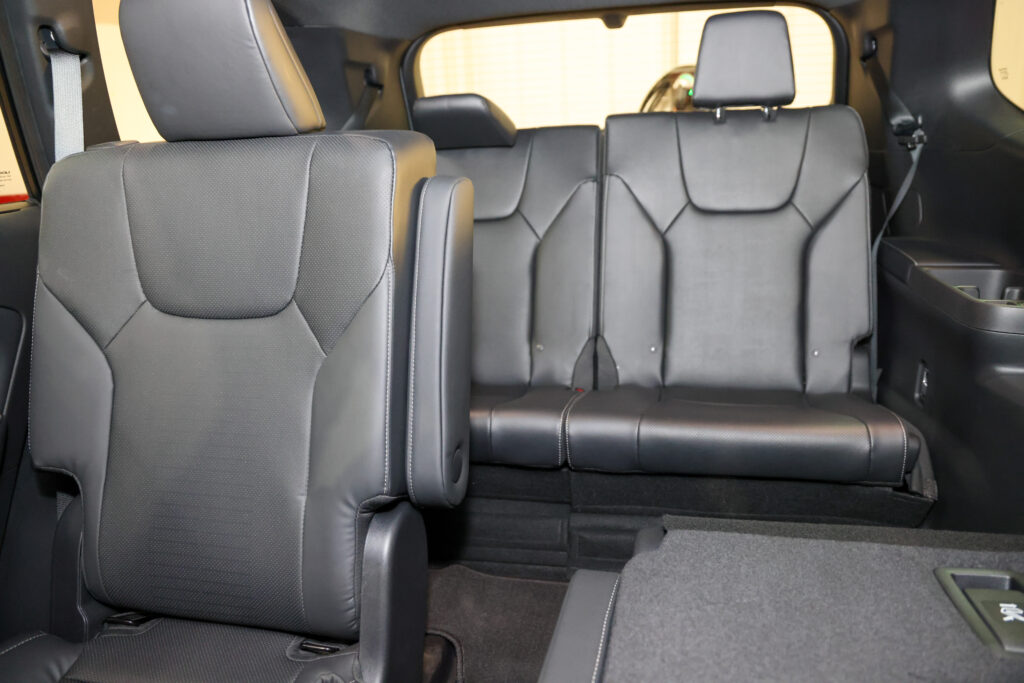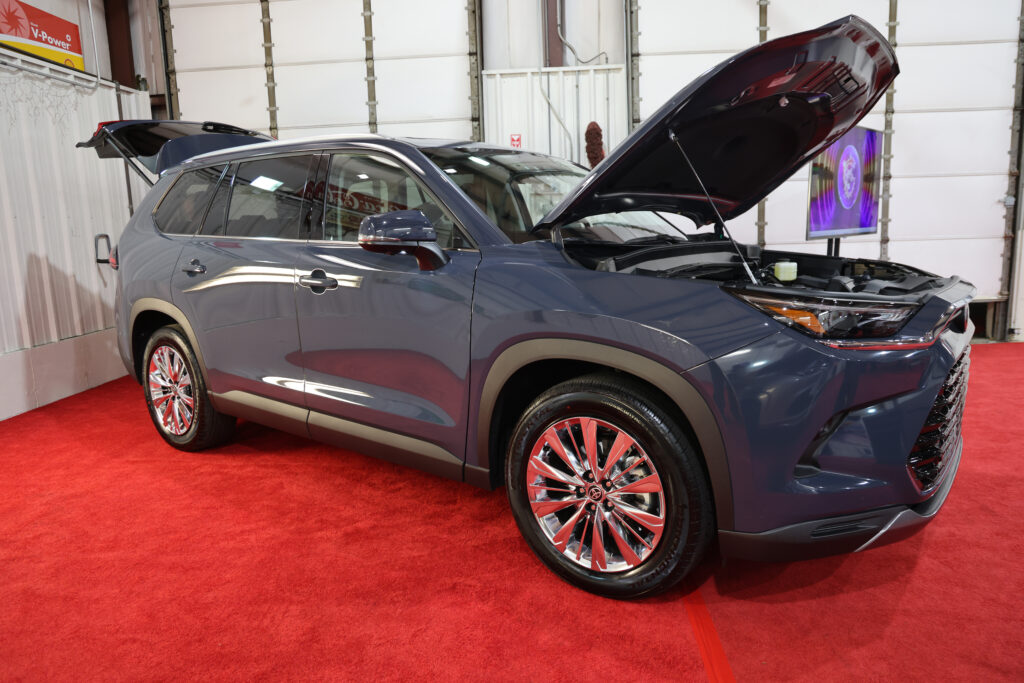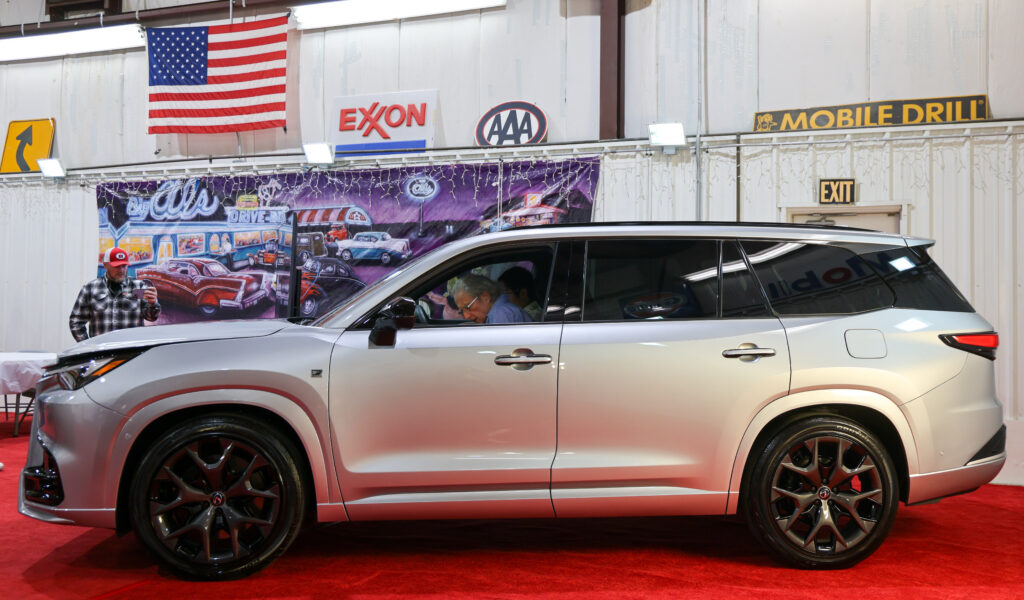By: Scott Wasser
A few years back, as the crossover craze exploded, a couple of colleagues and I spent several hours checking out new models at the New York Auto Show. We focused on three-row crossovers and entertained ourselves by contorting our bodies to climb and cram into what my kids called the “wayback” seats.
After each third-row “test,” we offered our verdicts of the seat’s comfort and accessibility. Most were judged to be impractical. Aside from those in behemoths such as Ford’s Expedition or Chevrolet’s Suburban, the general consensus was we’d probably want to sign up for yoga lessons if we had to climb in and out of most third rows on a regular basis, and we wouldn’t want to spend more than 20 minutes in any of them.
Memories of that experience came rushing back last week while listening to a presentation by Zachary Reed. Reed, East Coast Communications Manager for Toyota North America, was visiting the Automotion Garage to give NEMPA members a look at two new crossovers distinguished by third rows designed to actually be – get this – useful and practical.
Prior to Reed formally introducing the 2024 Lexus TX and Toyota Grand Highlander, I watched several NEMPA members climb in and out of those vehicles’ third rows. Among the few dozen of us participating in the event in person or online, there were smiles and nods of approval from those who took the time to give the third rows a “butt” test.

Comparing the spec sheets of the existing Highlander and the new Grand Highlander helps explain those reactions. Despite the similar names, Reed pointed out that the Grand Highlander is a new model built on a different platform than the existing (non-Grand?) Highlander. It is a closer kin to the Lexus TX, with which it shares many underpinnings.
Comparing dimensions of the Grand Highlander and the extremely popular legacy model reveals some dramatic differences. The new model is up to 7.5 inches longer from tip to tail, and its wheelbase of 116.1 inches represents an increase of nearly 4 inches. Those figures help give the Grand Highlander 8.8 cubic feet more interior volume than a 2023 Highlander, according to Toyota.
That makes the Grand Highlander roomier than the substantially larger overall Toyota Sequia.
Given those numbers, it’s no wonder the Grand Highlander’s third-row seating is much more generous than the legacy Highlander. For example, there are 5.3 extra inches of third-row legroom. That’s the difference between a seat that coddles just kids and one suitable for adults. Hip room is about the same in both vehicles, but the Grand Highlander provides around 2.5 extra inches of shoulder room.

According to Reed, the increased dimensions of the Grand Highlander help make it what Toyota considers a “long-trip” third row as opposed to the legacy Highlander’s “short-trip” third row. He said Toyota defines a long-trip row as one that can comfortably accommodate adults on lengthy drives.
Anyone who regularly hauls enough passengers to appreciate the Grand Highlander’s roomier third row will likely also appreciate its increased cargo carrying capacity. Compared to a three-row 2023 Highlander, it provides 4.6, 9.5 and 13.2 additional cubic feet of cargo space behind the third, second and first-row seatbacks, respectively.
Reed said the Grand Highlander was created in response to customer needs: “Toyota was missing a segment, missing folks kind of graduating from Highlander but who didn’t want to move on (to a different make) or move to a minivan. It shares the Highlander name, but it is an all-new vehicle from the ground up. It fills a need we were missing.
“The name Highlander has so much equity and such a loyalty rate among customers that (the Grand Highlander name) sort of paints the picture of where you would go to move up from a Highlander.”

The Grand Highlander is available in XLE, Limited, and Platinum trims with a starting price of $43,070. It offers three different powertrains, two of which are hybrid. The XLE and Limited can be front- or all-wheel drive, but the Platinum is offered only in all-wheel drive.
Although the all-new Lexus TX shares much with the Grand Highlander, there are two notable differences: More model and trim choices and different powertrains.
The TX 350 is available in base, Premium, or Luxury trim, and there is a TX 500h Sport Performance model offered in Premium or Luxury trim. Starting prices range from $55,050 to $72,650.
All of the TX models get a turbocharged, 2.4-liter, 4-cylinder engine with dual camshafts and variable valve timing. The 500h models also benefit from Lexus Hybrid Electric drive motors. The gasoline-only models produce up to 275 horsepower, and the hybrid powertrain pumps that up to 366.

The three TX 350 trim levels are available with front- or all-wheel drive. Both 500h models are equipped with AWD.
The other notable difference between the Lexus TX and Toyota’s Grand Highlander is that the Lexus’ rear seat is configured for two rather than three passengers. Both third rows get high marks for entry, egress, and comfort, but the Lexus’ third row seemed to feel more like custom seating to this 5-foot-8 autowriter.
I’m not sure if that makes sense to anyone other than me. But I suspect it makes a lot more sense than spending hours traipsing around what was once one of the largest auto shows in the country focused on examining third-row seating. Yet third-row seating was significant enough to motivate Toyota to create two brand new vehicles.

No comments yet.